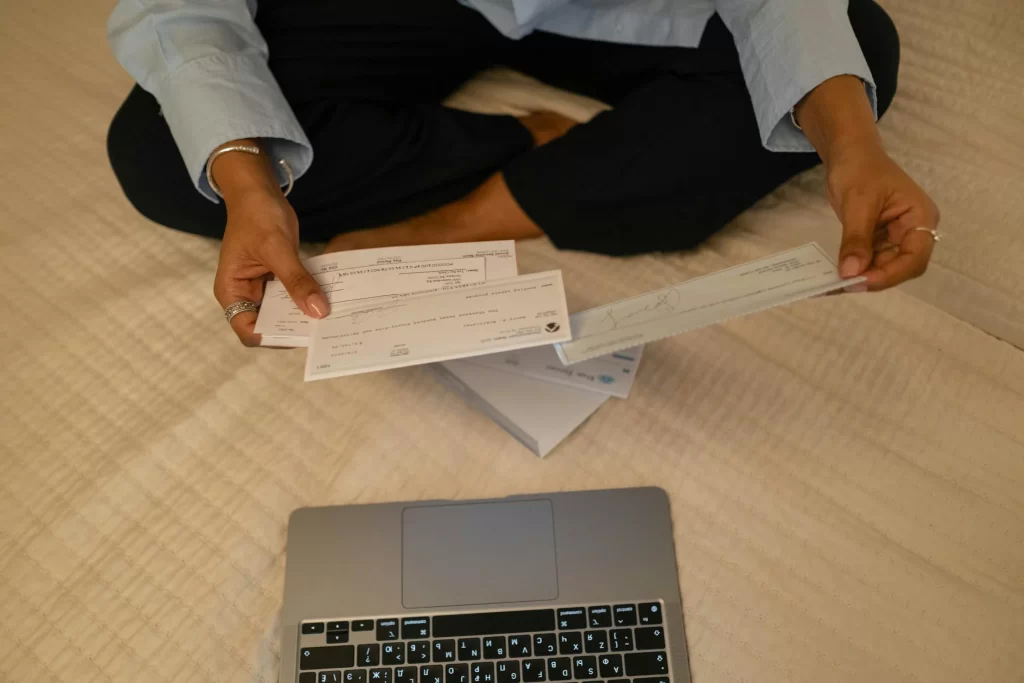Despite how digital our world has become, checks are still widely used, especially for rent, utilities, business payments, and formal transactions. Whether you’re new to using checks or just need a quick refresher, you may be wondering how to write a check properly.
In this guide, we will reveal exactly how to write a check properly and avoid common mistakes. So let’s get into the quick and easy steps to fill out a check the right way.
Why Writing a Check Still Matters
You might be thinking: Why bother with checks when I can Venmo or Zelle someone in seconds? Fair question. But there are situations where checks are still preferred, and sometimes even required.
- Landlords or leasing offices often ask for rent checks.
- Paying contractors or freelancers may require checks for paper trail purposes.
- Some government offices only accept check payments for services.
- Small businesses sometimes prefer checks for better accounting and lower transaction fees.
So whether you’re writing a check once a month or once in a blue moon, it’s worth knowing how to do it correctly.
What You’ll Need
Before you start writing, have this ready:
- A pen (never use a pencil)
- Your checkbook
- The correct amount and recipient information
Once you’ve got the info, follow these six quick steps.
How to Write a Check?
Step 1: Write the Date
Look at the top right-hand corner of the check. This is where the date goes. Write today’s date or the date you want the check to become valid. Use the format MM/DD/YYYY.
Tip: Don’t postdate a check (write a future date) unless you’re certain the recipient will wait. Some banks cash it immediately anyway.
Step 2: Add the Payee Name
On the line that starts with “Pay to the Order of,” write the full name of the person or business you’re paying.
- Use the legal name, not a nickname.
- If paying a business, double-check the exact spelling.
Example:
- Correct: “Johnathan Smith”
- Incorrect: “Johnny” or “John”
Step 3: Write the Dollar Amount in Numbers
In the small box on the right-hand side, write the exact amount in numbers.
Example:
If you’re paying seventy-five dollars and twenty cents, you would write:
75.20
- Always include both dollars and cents.
- Avoid extra spaces to prevent fraud (you can even draw a line after the cents).
Step 4: Spell Out the Amount in Words
Directly under the payee line, spell out the dollar amount in words. This helps banks verify the amount if there’s a dispute.
Example:
Seventy-five and 20/100
Tip: Write as far to the left as possible, then draw a line to the end of the space to prevent someone from altering the check.
Step 5: Add a Memo (Optional)
The memo line (bottom left) is optional but helpful. You can add a note about what the check is for. It can help you and the recipient track the reason for the payment.
Examples:
- “May rent”
- “Invoice #456”
- “Gift”
Step 6: Sign the Check
This step is crucial. Make sure to sign your name on the bottom right line. Your check is not valid without your signature. Use the signature that matches what your bank has on file. No doodles or nicknames here.
Bonus Tips for Check Safety
Writing the check is one thing. But keeping it secure is another. Here’s how to protect yourself:
- Use blue or black ink only.
- Never leave blank fields on a check.
- Store your checkbook in a safe place.
- If mailing the check, don’t write “rent” or “cash” on the envelope.
- Track checks in your check register or mobile banking app.
Final Thoughts
Knowing how to write a check isn’t just a life skill. It’s a financial necessity. Whether you’re paying rent, reimbursing a friend, or handling a business transaction, getting it right ensures your payment goes through smoothly and securely.
And hey, now that you’ve got it down, you can confidently say you’ve mastered one of the basics of money management.
Want more everyday money tips like this? Check out our blog.


